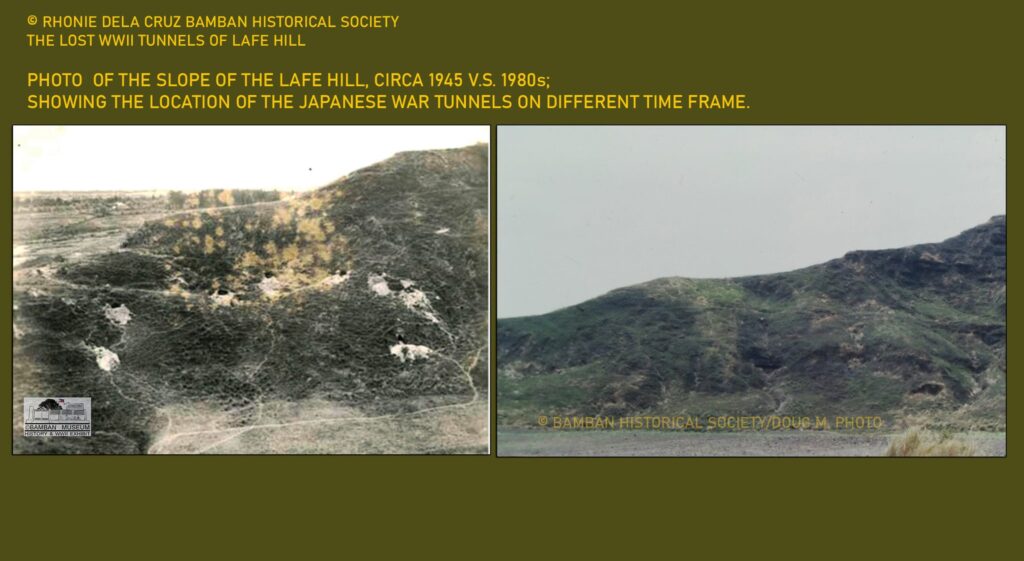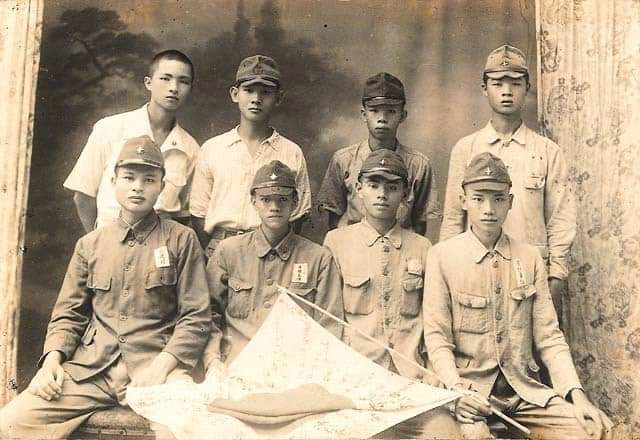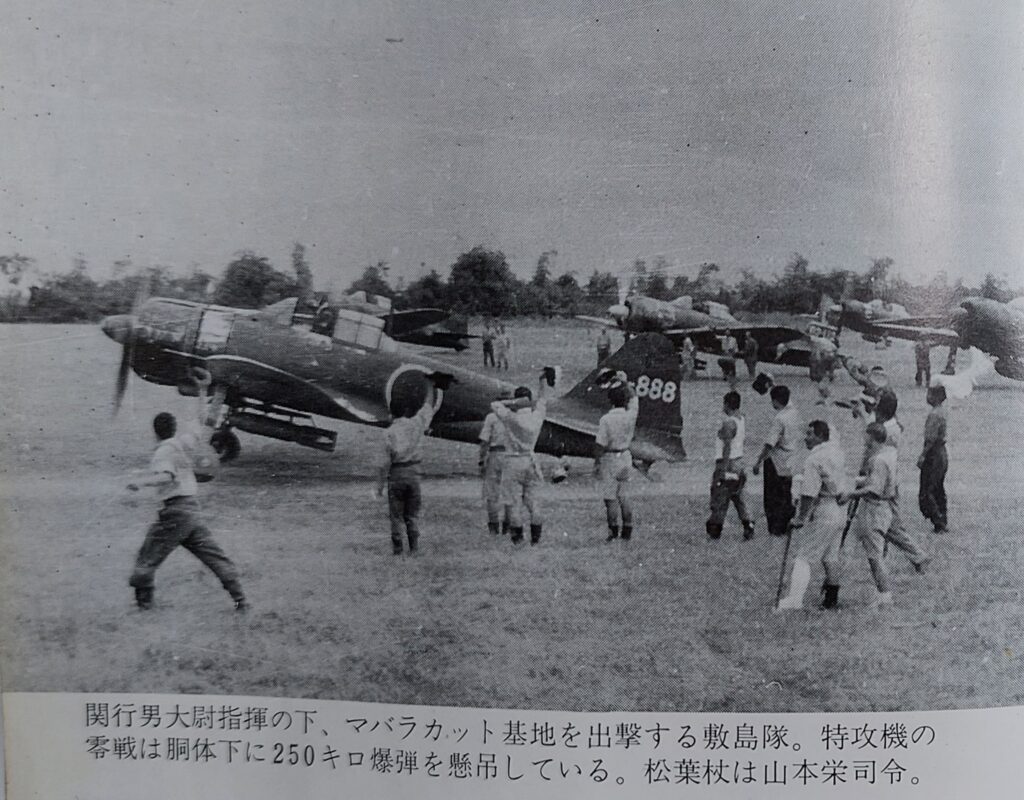
7.25 a.m. Captain Yamamoto, CO of 201 Air Group, in crutches, bidding farewell to the
pilots during the sorties. Kaneko Toshio photo.
Investigating History:
KAMIKAZE FROM MABALACAT AIRFIELDS, OCTOBER 25, 1944: NOW JAPANESE WORLD PEACE DAY
1944 年 10 月 25 日、マバラカット飛行場からの神風
Clark Field area had been scenes of WWII events, being an important Japanese air forces facility. The airfields surrounding Clark, especially Mabalacat and the Clark proper air strips were used both in conventional and Kamikaze special attack operations in the waning months of 1944. On October 25, 1945, 6 pilots of the Shikishima Unit, led by then Lt. Yukio Seki and 4 escort pilots from the 203rd Air Group led by Chief Petty Officer Nishizawa Hiroyoshi embarked on their final suicide sorties for Leyte Gulf in support of Vice-Admiral Takeo Kurita’s (2nd Fleet, IJN) First Striking Force.
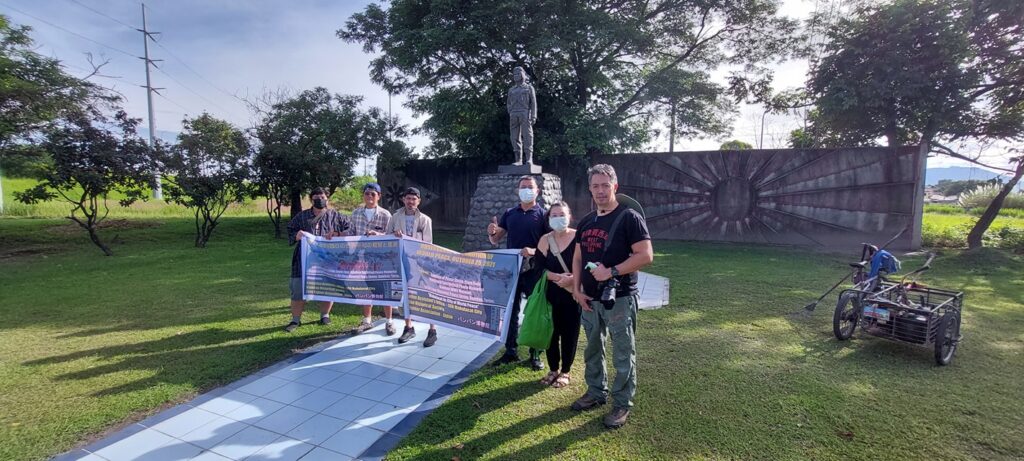
Rhonie Dela Cruz photo.
THE DAYS OF THE JAPANESE KAMIKAZE 日本の神風特攻隊の時代
Historically, the day marked an important part of WWII History, when the Japanese Imperial Navy under Vice-Admiral Onishi Takijiro, led the organization of the First Kamikaze Special Attack Corps (Shinpū Tokubetsu Kōgekitai) out of the young YOKAREN graduate pilots of the 201 Kaigun Kokutai Air Group under Lt. Seki and took off from nearby Mabalacat East Airfield on the early morning of October 25, 1944.
It a desperate attempt to change the tide of war by implementing suicide “body-crashing” of aircraft into the American carriers off Leyte at the height of the Battle of Leyte Gulf, Vice-Admiral Ohnishi gambled on a scheme of “one plane, one aircraft carrier” for his Kamikaze pilots organized midnight on October 19, 1944 at the house of the Santos Family which is now a KFC fast food outlet. From October 21 to 24, 1944, the Shikishima Unit was attempting to conduct successful special attack against American surface ships in Leyte Gulf, but to no success, until October 25, 1944.
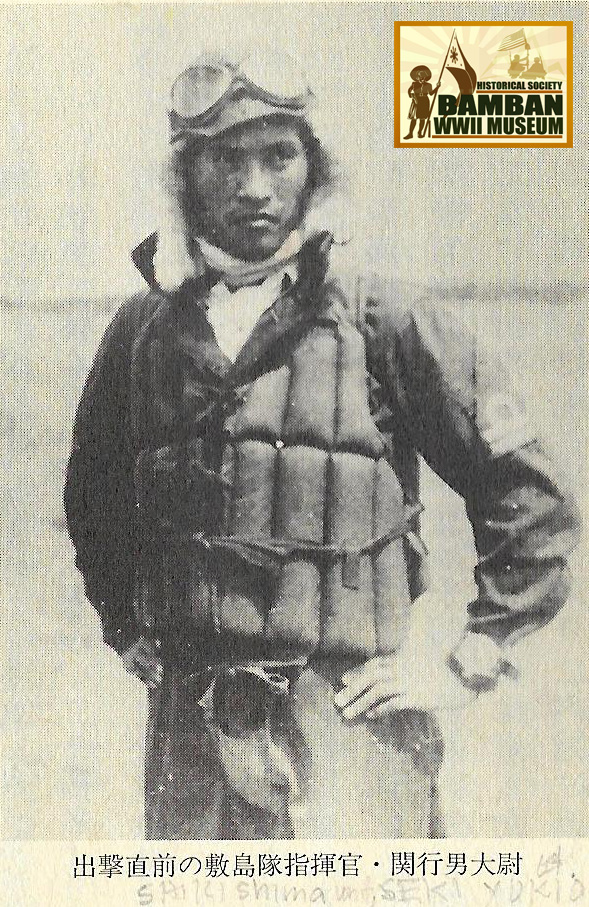
for the 301st, 201st Air Group at Mabalacat Airfields by October.
Courtesy of Kanekok Toshio
THE MABALACAT EAST AIRFIELD マバラカット東飛行場
The patches of bamboos are visible in the horizon in the barrio of Cacutud, Mabalacat, as the five pilots of the Shikishima Unit led by Yukio Seki (Japanese Naval Academy, Etajima, Class 70) started the engines of their A6M Zero fighter-bombers and escorted by a group of pilots from the 203rd Air Group led by Warrant Officer Nishizawa (one of Japan’s leading ace pilots). The 203rd Air Group at the time were mobilized at nearby Bamban Airfield, and some of the pilots from the unit were selected for escorts to Kamikaze Special Attack missions.
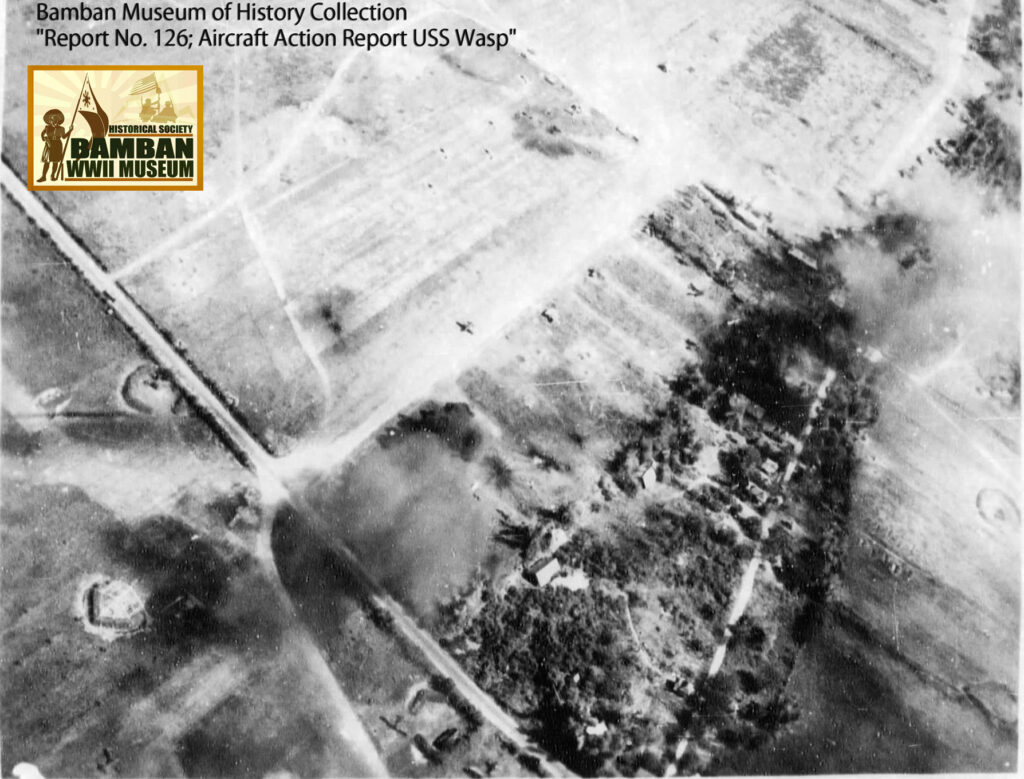
201st Air Group Special Attack operations in WWII.
US NARA photo.
THE LAST SORTIES OF THE SHIKISHIMA UNIT 敷島隊特攻隊の最後の飛行
Officers and airfield crew led by Captain Yamamoto (Commanding Officer, 201st Air Group) were at the scene to bid farewell to his Kamikaze pilots’ sortie. The official Japanese navy pilots with Lt. Seki on the morning of October 25, 1944 for the Shikishima Unit of the 1st Kamikaze Special Attack Corps that took off at the Mabalacat East Airfield at 0725 hours were:
Shikishima Unit, Special Attack Pilots, 201st Air Group:
-Yukio Seki: Lieutenant, Squadron 301, Leader;
-Tani Nabuo: Aviation Petty Officer 1st Class PO1C , Squadron 305;
-Nakano Iwao: Aviation Petty Officer 1st Class PO1C , Squadron 301;
-Yamashita Noriyuki: Aviation Petty Officer 1st Class PO1C , Squadron 301;
-Nagamine Hajime: Seaman 1st Class, Squadron 305;
-Oguro Shigeo: Senior Seaman, Squadron 311.
Escorts 直掩203空 from 203 Air Group:
-Nishizawa Hiroyoshi: Chief Petty Officer, Squadron 303;
-Honda Shingo: Chief Petty Officer, Squadron 303;
-Sugawa Misao: Leading Seaman, Squadron 303;
-Baba Ryoji: Leading Seaman, Squadron 303.
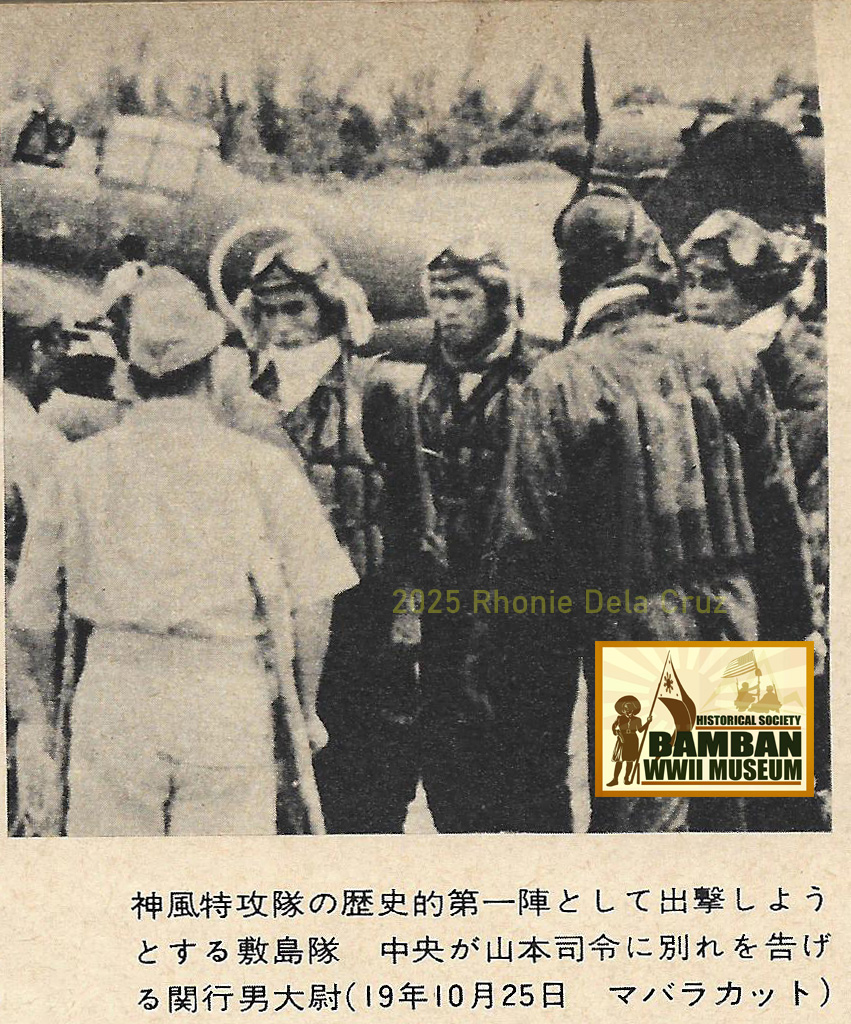
the Shikishima Unit at Mabalacat East Aifield, October 25, 1944.
Courtesy of Kaneko Toshio
HIRIYOSHI NISHIZAWA: JAPAN’s LEADING NAVAL ACE PILOT
Nishizawa was no ordinary pilot, as he was one of Japan’s leading naval ace pilots in WWII, with 87 aircraft to his credit. But now, he was an escort pilot of Lt. Seki’s suicide squadron for Leyte Operation. There is a possibility that the famous last sortie of Lt. Seki’s Shikishima Unit at the Mabalacat East Airfield on the morning of October 25, 1944 was shot by Mr. Inagaki Hirokumi, the war correspondent from Nihon Eiga-sha (Japan Film Corporation).
THE SUCCESS OF THE SPECIAL ATTACK AND LOSS OF CHIEF PETTY OFFICER NISHIZAWA
西沢 仁義: 日本を代表する海軍エースパイロット
At about 10 a.m., Lt. Seki’s Shikishima Unit reached Leyte Gulf and later conducted the first officially sanctioned Kamikazes, hitting the USS St. Lo carrier by 10.45 a.m. where it sank later and damaging other American carriers. Chief Petty Officer Nishizawa landed at Cebu Airfield and reported the success of Lt. Seki and the Shikishima Unit, to Commander Tadashi Nakajima (Flight Officer, 201st Air Group) where it was later communicated to the major Imperial Japanese Navy headquarters in the Philippines and Japan. Nishizawa reported to Commander Tamai in Cebu airfield, and his A6M Zero was requisitioned for Special Attack probably with the Yamato Unit; only to die when his transport aircraft was shot down over Mindoro by American Grumman F6F fighters on his way to Mabalacat from Cebu.
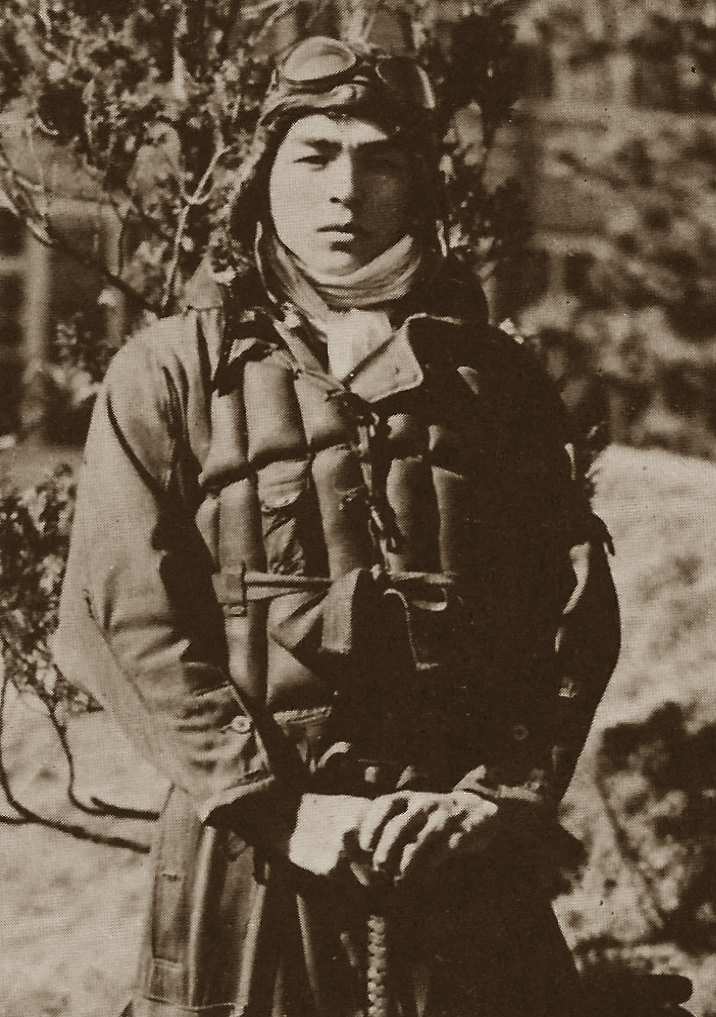
at nearby Bamban Airfield, later was selected to become escort to Lt. Seki’s unit.
THE SUISEI BOMBERS WITH THE KIKUSUI UNIT AT MABALACAT
水星爆撃機とマバラカットの菊水部隊
On October 25, 1944, the Shikishima Unit of Lt. Seki was the remaining squadron of the 1st Kamikaze Special Attack Corps, the others; Yamato Unit was in Cebu while the Yamazakura and Asahi were based at Davao, also conducted suicide attacks on American surface ships in Leyte Gulf. The other suicide squadron, the Kikusui Unit, was organized on October 23, 1944, was based at Mabalacat Airfields and composed of Yokosuka D4Y Suisei (彗星, Comet) (Allied reporting name “Judy”) carrier-based dive bombers. On the same morning, the Kikusui Unit conducted Kamikaze mission, and sortied at 10.30 a.m. with the following pilots:
KIKUSUI UNIT: (第一神風特別攻撃隊 彗星隊)
Yokosuka D4Y Suisei, 1 dive-bomber
-Sunai Norio: 105th Squadron, 761 Air Group
-Asao Hiroshi: 105th Squadron, 761 Air Group
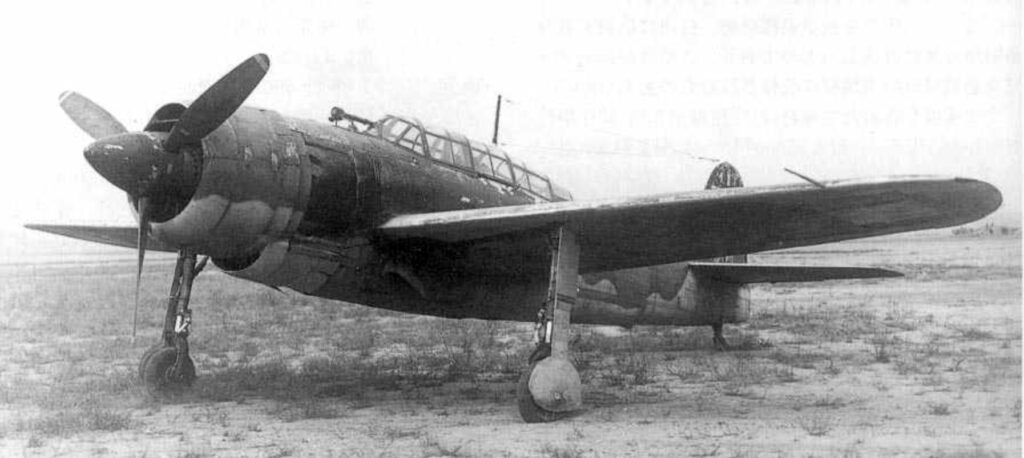
of the First Air Fleet with bombers, was based at Clark Field. The Kikusui Unit was the Special Attack Squadron using Suisei. Photo by Yokosuka D4Y Suisei – Wikipedia.
With the success of Lt. Seki’s Shikishima Unit as well from other Kamikaze units from the First Special Attack Corps of Vice-Admiral Onishi’s First Air Fleet, the strategy of special attack “body-crashing “ was eventually adopted by the 2nd Air Fleet under Vice-Admiral Shigeru Fukutome and later the Imperial Japanese Air Army in the Philippines (4th Air Army).
THE END OF THE SPECIAL ATTACK 特別攻撃の終わり
Lt. Seki’s take-off at Mabalacat East Airfield and its success would change the history of modern warfare, but not the outcome of the war. After the Philippine Campaign, the Kamikaze Special Attack was carried on massive scale at the Okinawa Operations. By August 1945, two atomic bombs were dropped over Hiroshima and Nagasaki, forcing the unconditional surrender of Japan.
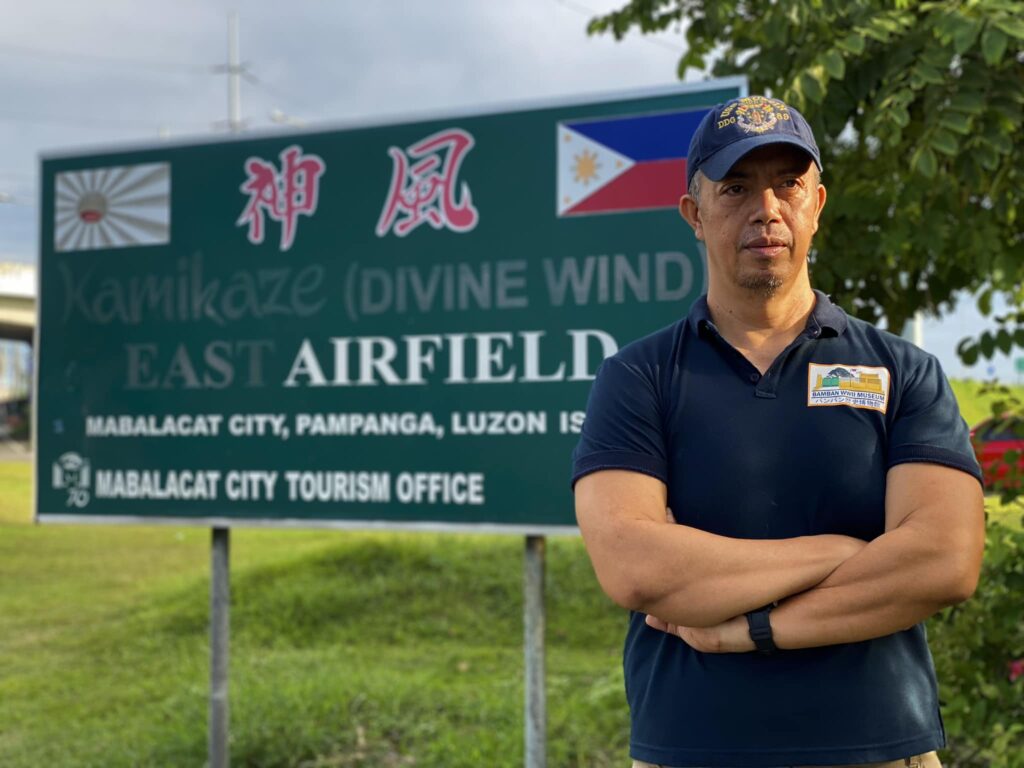
IN MEMORIAM AND WORLD PEACE 追悼と世界平和のために
The young YOKAREN pilots of Shikishima Unit under Lt. Seki and other pilots from the First Kamikaze Special Attack Corps organized at Mabalacat had made the sacrifices of the first Japanese Kamikaze. Since early 2000s, some Japanese descendants of pilots and other delegates visit the former airfields at Clark and Bamban, at times led by Bishop Ekan Ikeguchi.
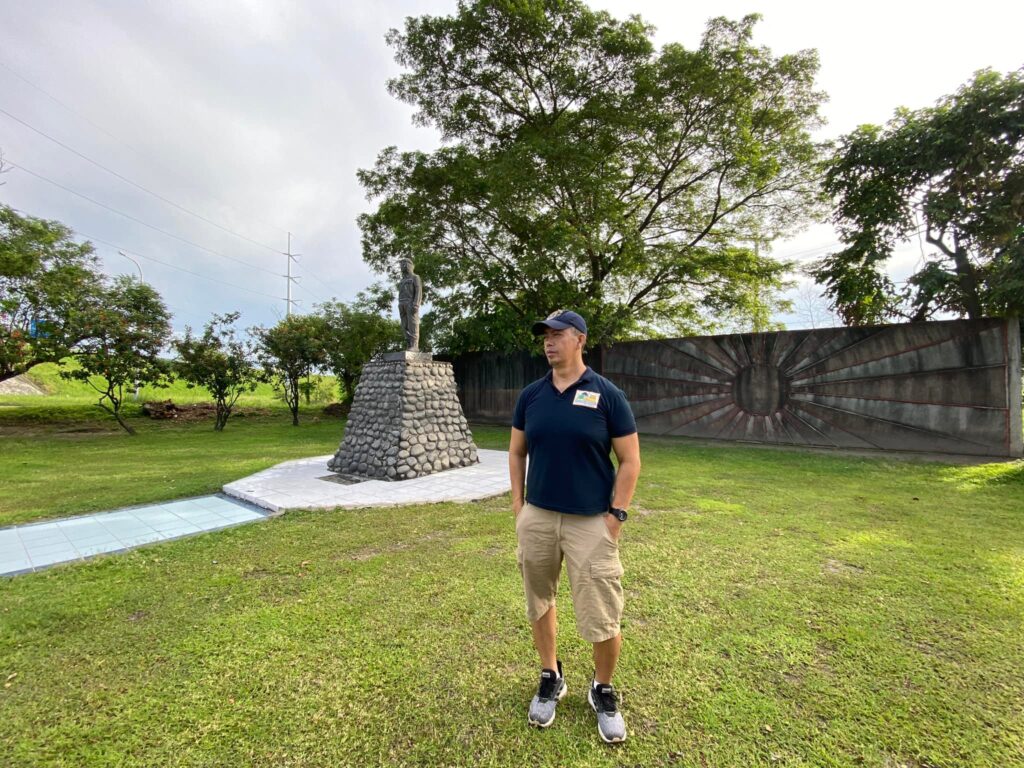
The event of October 25, 1944 was declared as a day for World Peace; a reminder of the tragedy in WWII with the Japanese pilots giving their lives in Kamikaze Special Attack that started at the Mabalacat Airfields. These days, the descendants of the Kamikaze Special Attack pilots visit the memorials at Clark, Mabalacat and the Bamban, as well as the Bamban WWII Museum who had a gallery of the fighting around Clark-Bamban and the Kamikaze Operations.
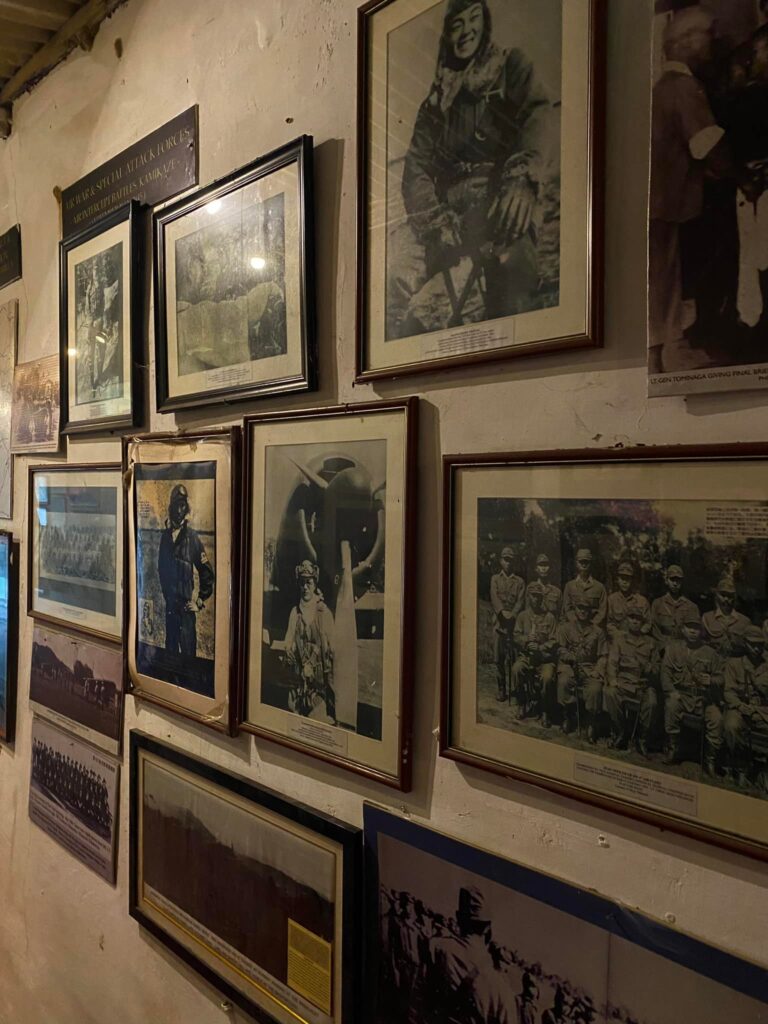
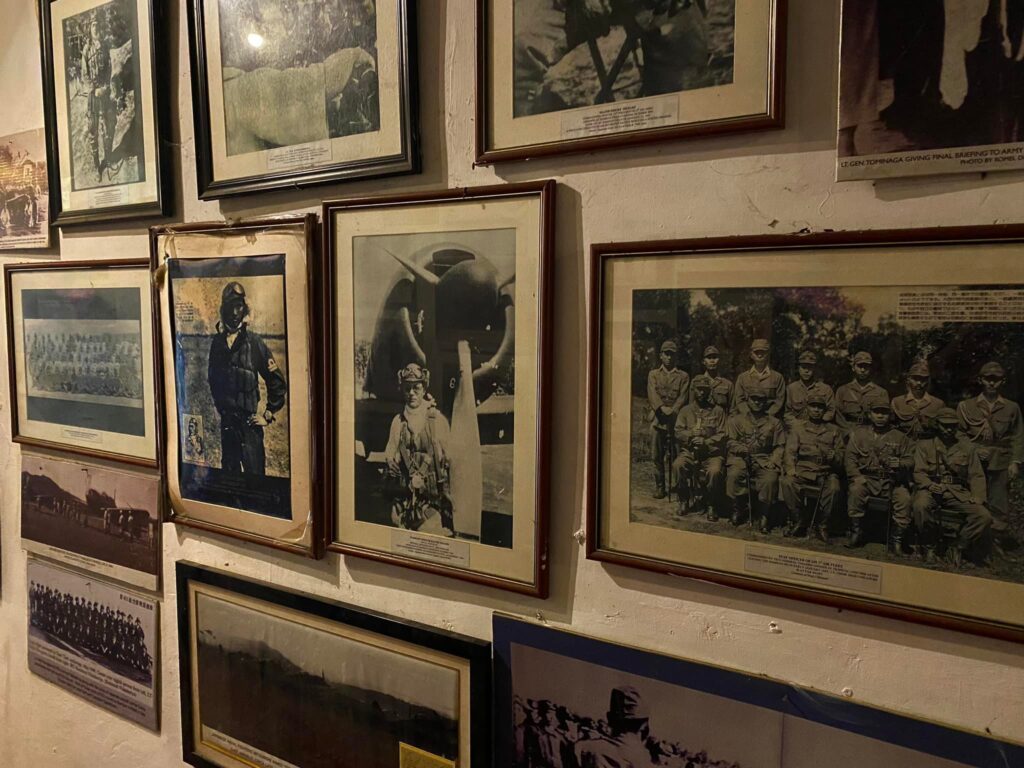
RHONIE C. DELA CRUZ
Bamban Historical Society
Bamban WWII Museum
Center for Pacific War Studies
Provincial Government of Tarlac –
Tarlac Provincial Tourism Office
Citation:
(1) Kaneko Toshio, True Records of the Kamikazes – The Truth of Special Attack. translated by Jin Arai and Takaoki Fusejima.
(2) Moji Chikanori, At the Far End Between the Sky and the Sea – Reminiscences of the First Air Fleet Adjutant, translated by Kazuhiko Moji.
(3) Inoguchi, Nakajima and Pineau, The Divine Wind – Japan’s Kamikaze Force in WWII.
(4) Detailed translation of the book of Kaneko Toshio’s book on the “Table of Operations of the First Kamikazes” was done by Nino Bayan, Takashi Fukuda and Ed Saito.

